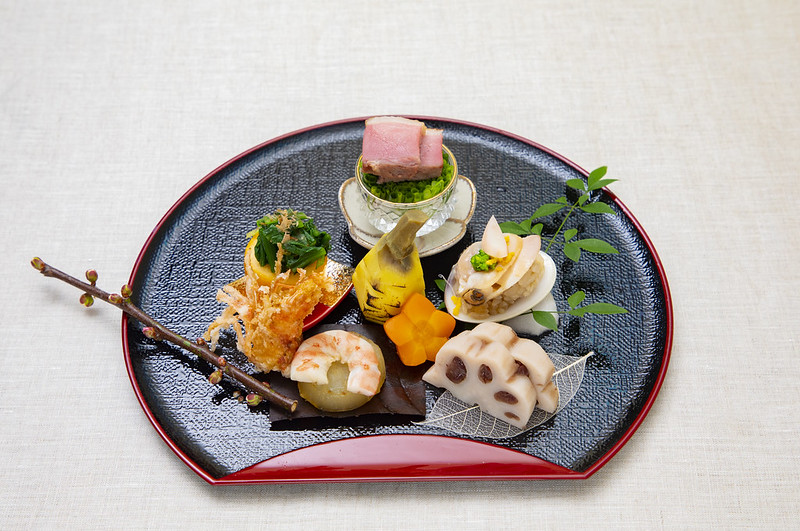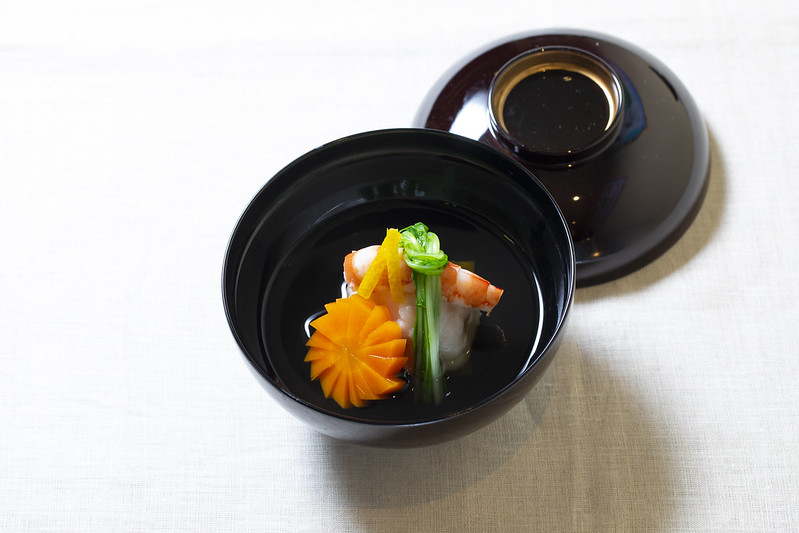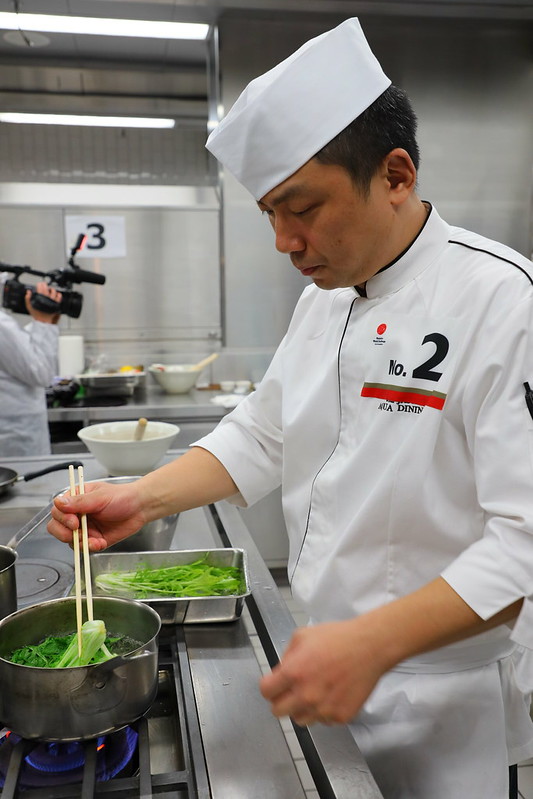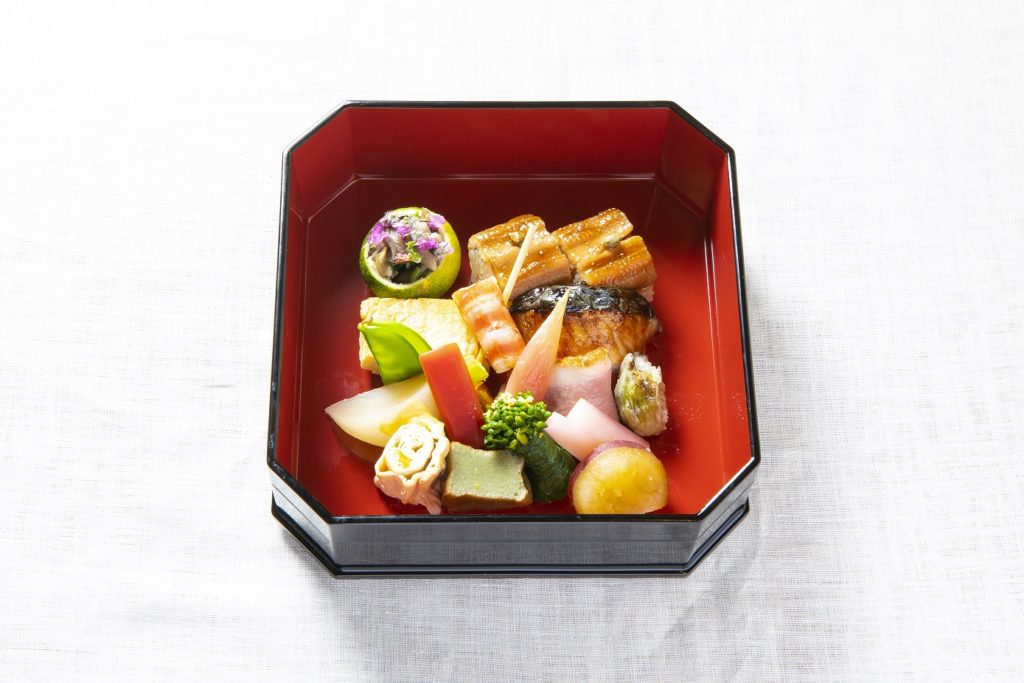In Search of Missionaries to Spread Knowledge of Japanese Culinary Culture
Every year, the Washoku World Challenge holds a themed competition for foreign chefs who are interested in Japanese gastronomy.

‘Hangetsubon’, the winning dish from the 2019 edition of the Washoku World Challenge, made by Chinese chef Wei Ping Wang
In 2013, traditional Japanese cuisine, known as washoku (from wa, Japan, and shoku, cuisine), was added to the UNESCO Intangible Cultural Heritage List. At the time, there were almost 55,000 Japanese restaurants outside of the country. Five years later, their number had doubled to 118,000. Eighty to 90% of them are run by non-Japanese owners.
Based on this observation, the Ministry of Agriculture, Forestry and Fisheries (MAFF) in Japan decided to organise the Washoku World Challenge, which has now been held every year since 2013. The aim of this competition is to train foreign chefs who are interested in Japanese cooking techniques so that they can open their own restaurants and adapt the flavours of Japan to local customers’ tastes.
Making Japanese culinary knowledge more accessible to chefs from overseas
The teams from the MAFF drew inspiration from the experience of Japanese chefs who trained overseas. French cuisine, for example, was initially eaten in Japan on special occasions. Thus, the Japanese went to restaurants run by French chefs in luxury hotels, and paid a rather high price for the privilege.
Gradually, however, Japanese chefs started to travel to France to learn the art of gastronomy. When they returned to Japan, they adapted the French techniques to Japanese tastes and opened more accessible establishments like canteens and cafeterias in department stores. As a result, Japanese people became more familiar with French culinary culture.
The Washoku World Challenge seeks to achieve the same result. The competition enables the selected chefs to train in the techniques used in traditional Japanese cuisine. Every year has a different theme; in 2016, it was ichiju-issai, the simplest meal in Japanese gastronomy. It consists of a bowl of rice, a bowl of soup, and one dish, which the participants had to create in their own way.
Japanese flavours married with local cuisine
In 2019, the theme was ‘texture and mouthfeel.’ As Yoshihiro Murata, head judge, chef at the restaurant Kikunoi, and president of the Japanese Culinary Academy, explains, ‘the Japanese language contains a very large number of words used to describe the texture of food. There are said to be over 400, including mocchiri (stodgy) and paripari (crispy). Our rich vocabulary to describe texture reflects the close attention paid to it in traditional Japanese cuisine.’
Chinese chef Wei Ping Wang was named the winner by the jury for his aromatic clam sushi with black Chinese vinegar. This Chinese twist to a typically Japanese dish perfectly captured the mission of the Washoku World Challenge.
In 2020, the COVID-19 pandemic meant that the Washoku World Challenge had to be held entirely online, whereas usually the finalists would be invited to Japan to attend seminars.
More information about the Washoku World Challenge can be found on its website.

‘Ninomowan’, the winning dish from the 2019 edition of the Washoku World Challenge, made by Chinese chef Wei Ping Wang

Chinese chef Wei Ping Wang during the 2019 edition of the Washoku World Challenge

A dish by South Korean chef Yoo Sung Yeub, winner of the 2018 edition of the Washoku World Challenge
TRENDING
-
The Tattoos that Marked the Criminals of the Edo Period
Traditional tattoos were strong signifiers; murderers had head tattoos, while theft might result in an arm tattoo.

-
Paris, Tokyo: Robert Compagnon
With his co-chef and talented wife, Jessica Yang, Robert Compagnon opened one of the top new restaurants in Paris: Le Rigmarole.
 3:31
3:31 -
The Story of Sada Yacco, the Geisha who Bewitched Europe
Described by Dazed magazine as the first beauty influencer, she has been restored to her former glory since 2019.

-
Ito Jakuchu's Naturalist Paintings
From 15 September until 14 October 2018, the Petit Palais showcased the artist's iconic ‘Images of the Colourful Realm of Living Beings’.

-
Chiharu Shiota, Red Threads of the Soul
Last year, more than 660,000 people visited the retrospective 'Chiharu Shiota: The Soul Trembles' exhibit at the Mori Art Museum.





